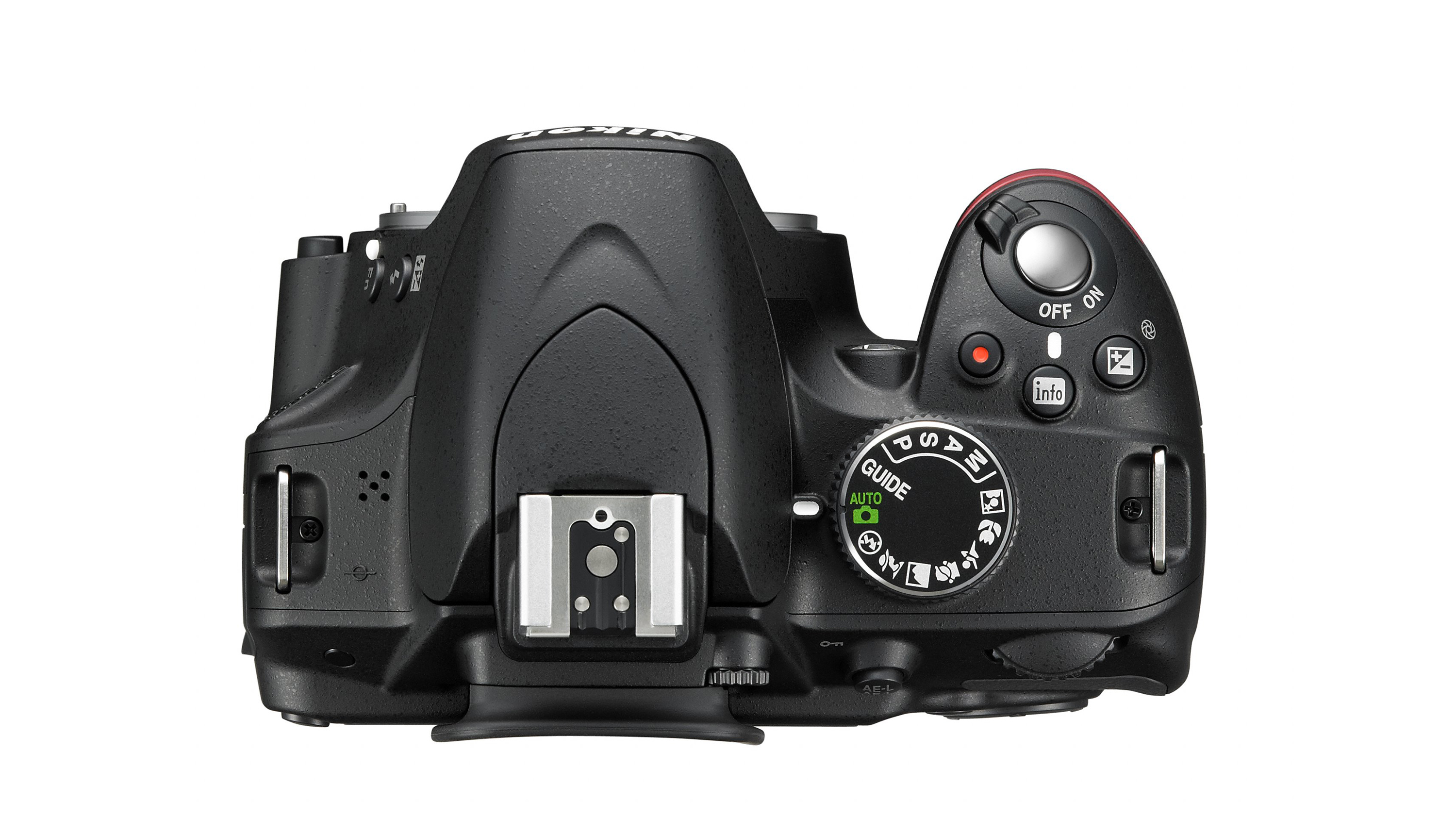Why you can trust TechRadar
Build and handling
- Polycarbonate construction
- Useful Guide Mode for new users
- 505g
The Nikon D3200 takes the lead from the Nikon D3100, but has a few improvements to the ergonomics that are very helpful to the everyday shooter.
While there are a limited number of direct control buttons on the Nikon D3200, commonly used functions (such as the sensitivity settings), can be accessed via the "i" quick menu button on the back of the camera.
Although quite a small camera, the deep grip provides a good amount of purchase. The combined weight of the camera and standard 18-55mm kit lens is heavy enough to give the Nikon D3200 the feel of a quality piece of kit.

The camera feels robust enough to withstand minor knocks and scrapes, although it obviously doesn't have the higher quality of build of its bigger, more expensive brothers in the lineup.
New buttons include a dedicated Live View button, a welcome and sensible addition for novice users who may be used to composing images on an LCD screen if they have come from a compact or compact system camera background.
Another new addition is a dedicated movie record button, which can be found conveniently located next to the shutter release. Again, this is a sensible idea for the intended audience, who are unlikely to want to spend time fiddling about with dials and menus to reach the movie record mode.
Nikon has improved the screen for the Nikon D3200, bringing it up to 921,000 dots from the D3100's 230k dot offering. The screen is very clear and bright, and has a good angle of view from a variety of different shooting positions while also coping well with a variety of lighting conditions.
It's a shame that an articulating screen couldn't be included on the Nikon D3200. However, according to Nikon, adding this would come at the cost of making the overall body bigger and more expensive, so it's understandable that the manufacturer has chosen to keep articulating screens for its larger bodied cameras.

The on-screen information display orientation changes depending on whether you're shooting in portrait or landscape mode. This is a nice touch that makes shooting in portrait mode a much easier proposition. It's also likely to impress those used to using smartphones and the like.
The improvements made to the Guide menu make the process of shooting high quality images easier, while also managing to impart some knowledge to the photographer using it.
For example, when using the new Reds in Sunsets mode, the camera guides the user through altering white balance, meaning that eventually the user may come to use the camera independently, without the need for such help.
Autofocus
- 11-point AF, 1 cross-type AF point
- AF-assist illuminator
- 3D-tracking AF
With 11 autofocus points on offer, you can elect to have the camera choose an AF point for you, or switch to choosing it for yourself. Being a slightly more advanced operation, this option is hidden away in the menu a bit, which is a little frustrating.
Once selected, however, the autofocus point can be adjusted by using the standard navigation buttons.
Autofocus acquisition in the majority of cases is quick, slightly dropping in low light situations, but the system copes well otherwise. Although the Nikon D3200 doesn't boast the AF speed of some other DSLRs, the average user should have no problems using the camera in everyday shooting scenarios.
It's worth bearing in mind that autofocus is slower when using Live View, because the speedy phase detection is replaced by a slower contrast detection system. This may frustrate some shooters who are used to the quick speeds of compact cameras.
Current page: Build, handling and AF
Prev Page Introduction and key features Next Page Performance and image qualityAmy has been writing about cameras, photography and associated tech since 2009. Amy was once part of the photography testing team for Future Publishing working across TechRadar, Digital Camera, PhotoPlus, N Photo and Photography Week. For her photography, she has won awards and has been exhibited. She often partakes in unusual projects - including one intense year where she used a different camera every single day. Amy is currently the Features Editor at Amateur Photographer magazine, and in her increasingly little spare time works across a number of high-profile publications including Wired, Stuff, Digital Camera World, Expert Reviews, and just a little off-tangent, PetsRadar.

